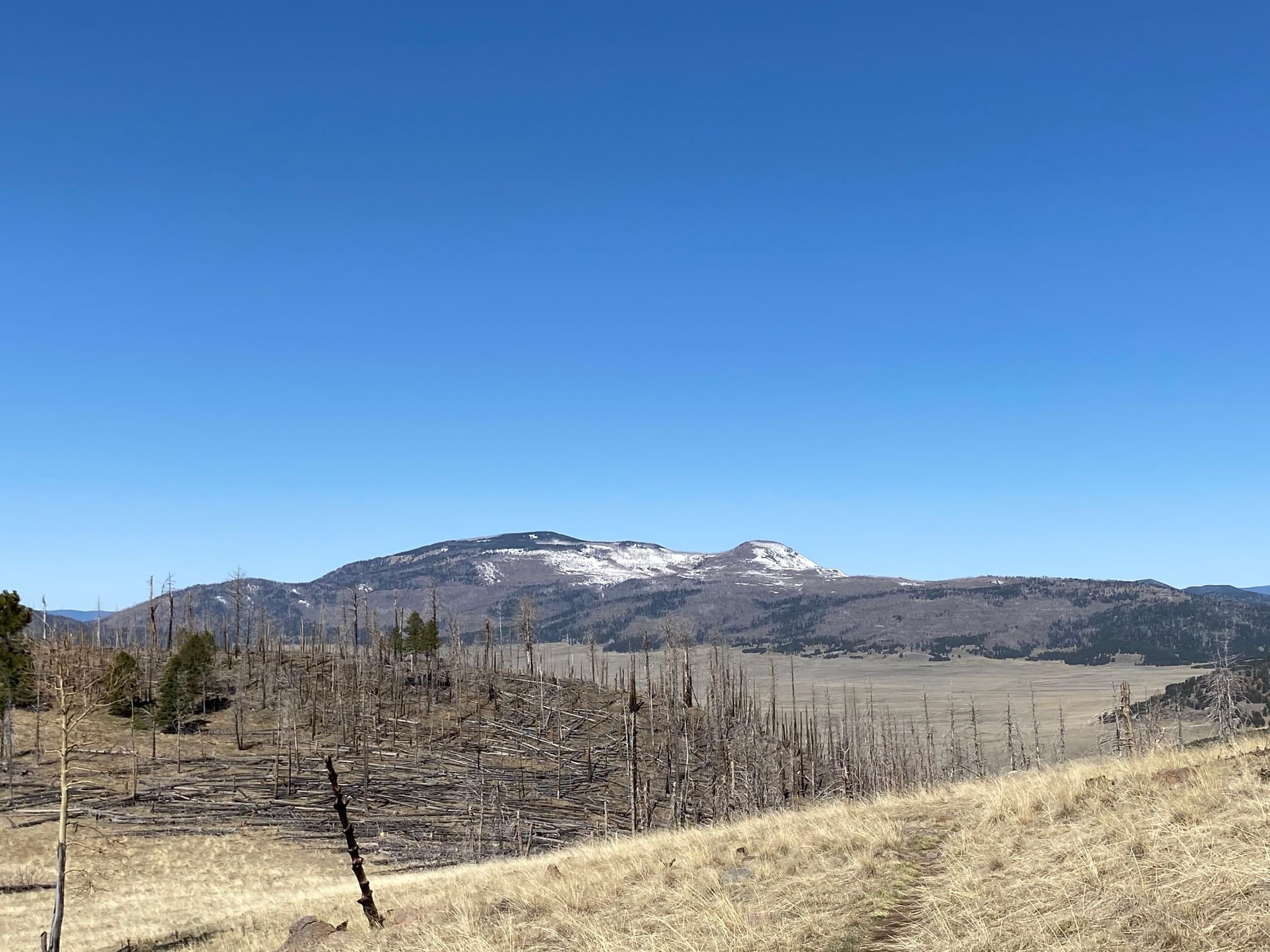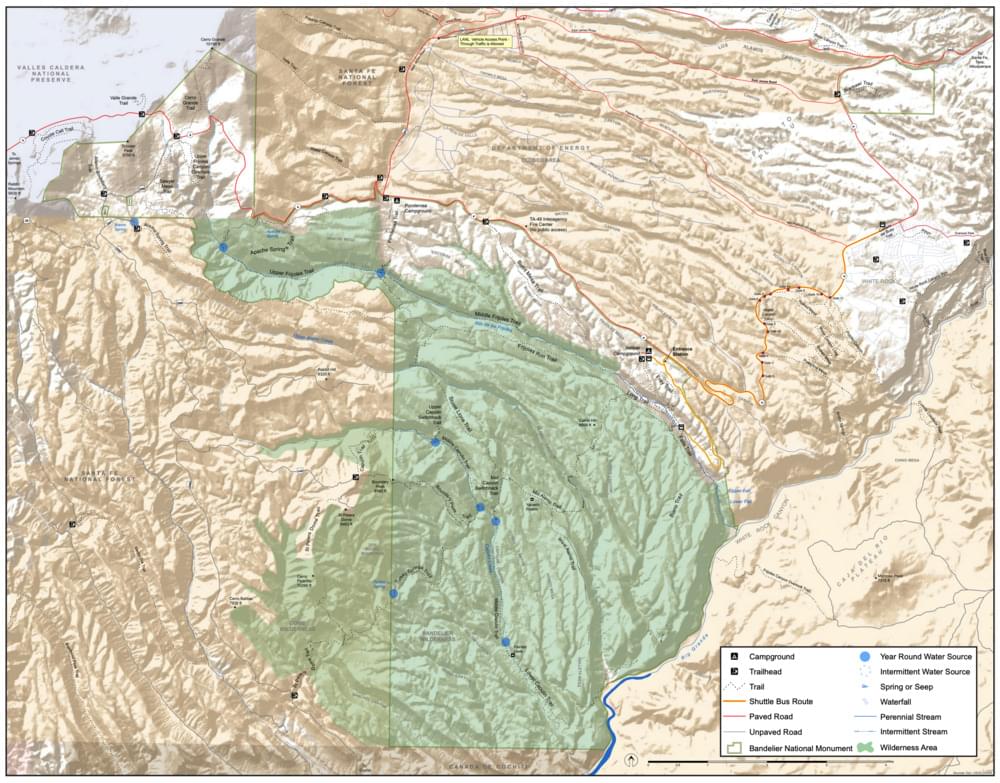Bandelier NM--Cerro Grande Trail

Bandelier NM--Cerro Grande Trail
Los Alamos, New Mexico 87544
Bandelier National Monument Official WebsiteBandelier National Monument map
Tips for Birding
The trail can be strenuous for some, but if you take it slow it is a nice hike. At the beginning, it is flat and open, great for sparrows and bluebirds. Usually nice mixed songbird flocks. Once you start ascending, a canyon will appear on your right. Swallows, swifts, and raptors like to catch the thermals in here. Dusky Grouse are most common on the left-hand side, on the steeper slope above the trail. Once you ascend for a while, you'll emerge into a meadow with some burned trees, and then climb some switchbacks through some more thinner pine forest. At the top, it's rocky and barren, with burned areas all around you. It's a spectacular view of the Valle Grande and a very good spot to look for raptors.
Birds of Interest
Dusky Grouse, Williamson's Sapsucker, American Three-toed Woodpecker
About this Location
Cerro Grande Trail is a 2.3-mile out-and-back trail with an approximate elevation gain of 1200 feet. Mostly mixed pine woodland with some burned areas, open meadows, and rocky tundra at the top. A spectacular 360-degree panoramic view of the Valles Caldera National Preserve and Bandelier National Monument awaits you at the summit.
About Bandelier National Monument
See all hotspots at Bandelier National Monument
Bandelier National Monument sits at the southern end of the Pajarito (Spanish for little bird) Plateau. The plateau was formed by two eruptions 1.6 and 1.4 million years ago. Home to the Bandelier Wilderness, Bandelier ranges from 5340 ft at the Rio Grande to the south and 10199 ft at the summit of Cerro Grande to the north, almost a mile of elevation change in just under 12 miles. This elevation gradient creates a unique diversity of habitats specific to Northern New Mexico. The diversity of habitats and quick access to water supported a relatively large population of Ancestral Pueblo people. Currently, Piñon-Juniper woodlands dominate in the southern parts of the park transitioning through ponderosa pine savannahs and forests finally reaching mixed conifer forests at the highest elevation. Scattered throughout the park are desert grasslands, montane meadows, and riparian areas in the canyon bottoms. Bandelier is home to a wide variety of wildlife. The backcountry trails at Bandelier climb in and out of deep canyons and cross large flat mesas, showcasing the entire spectrum of volcanic geology.
Bandelier is set within vast amounts of open space. North and west of the park rests the Valles Caldera National Preserve (VCNP), an 89,000-acre nature preserve, which was created by the eruptions that formed the Pajarito Plateau followed by volcanic subsidence. On all sides of the park sits over one million acres of the Santa Fe National Forest, with the Dome Wilderness adjoining the western edge of Bandelier Wilderness. A large portion of the northeastern boundary is shared with Los Alamos National Lab, which covers 26,500 acres of restricted, mostly open space. Bandelier’s direct neighbors make the park’s 34,000 acres feel much larger than it is.
Access to Bandelier National Monument is by a free shuttle bus in the summer months.
Features
Entrance fee
Restrooms on site
Wheelchair accessible trail
Content from Bandelier National Monument Official Website and Owen Sinkus
Last updated September 11, 2023
